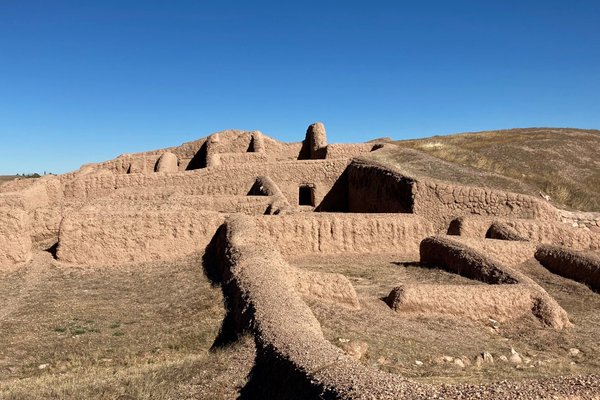Mexico
Paquimé
The Archeological Zone of Paquimé, Casas Grandes is an archaeological site of a settlement of the Pueblo culture.
The remains show the connection between the adobe architecture of the Southwestern United States and the more complex structures of Central American cultures. Paquimé developed between 1200 and 1400 into an important commercial center with about 10,000 inhabitants. It had a complex water control system.
Community Perspective: Easier to visit on a US road trip (see Randi’s description) than from Central Mexico (Els did so via Chihuahua by public transport, Clyde with a car from Hermosillo). It lacks grand monuments, but it is an interesting and calm place with a good on-site museum.
Site Info
Official Information
- Full Name
- Archeological Zone of Paquimé, Casas Grandes (ID: 560)
- Country
- Mexico
- Status
-
Inscribed 1998
Site history
History of Paquimé
- 1998: Inscribed
- Inscribed
- 1991: Referred
- Bureau -pending the results of a comparative study of property of this type located in Mexico and the United States.
- Type
- Cultural
- Criteria
- iii
- iv
Links
- UNESCO
- whc.unesco.org
- Official
-
- inah.gob.mx — Paquimé
- Related
-
- aamorgan.com — Paquimé: a visitor's companion
- britishmuseum.org — Ceramics and human skeletons shipped to the British Museum
- youtu.be — Short video about the site, made by Japanese TV
All Links
UNESCO.org
- whc.unesco.org — whc.unesco.org/
Official Website
- inah.gob.mx — Paquimé
Related Resources
- aamorgan.com — Paquimé: a visitor's companion
- britishmuseum.org — Ceramics and human skeletons shipped to the British Museum
- youtu.be — Short video about the site, made by Japanese TV
- prism.ucalgary.ca — Thesis about Geographic Origins, Status, and Identity at Paquimé
- researchgate.net — More details about the macaw breeding aviculture: Organization of Production at Paquimé
- desertusa.com — Good story on Paquime by Desert USA
Community Information
- Community Category
- Archaeological site: Pre-Columbian
Travel Information
Most Remote Cultural WHS
Recent Connections
-
Most Remote Cultural WHS
The closest hub in Mexico is Chihuahua,… -
Archaeological potential
"only about 20% has been excavated" (AB… -
Canals
The potable water consumed by the inhab…
Connections of Paquimé
- History
-
-
Pueblo culture
"Paquimé played a key role in trade and cultural contacts between the Pueblo culture of the south-western United States and northern Mexico and the more advanced civilizations of Mesoamerica." (official description)
-
- Architecture
-
-
Earth Architecture
provide exceptional evidence of the development of adobe architecture in North America, and in particular of the blending of this with the more advanced techniques of Mesoamerica (OUV)
-
- World Heritage Process
-
-
Need for a Comparative Study
Bureau -pending the results of a comparative study of property of this type located in Mexico and the United States. (Referral of 1991) - seems to have taken place in 1992 as "Pueblo Culture Sites in Mexico and the U.S.A.: A Comparative Study by ICOMOS"
-
- Human Activity
-
-
Irrigation and drainage
a sophisticated water-distribution system (AB ev) -
Locations for playing sport
Two ball-courts have been excavated, with characteristic I-shaped plans derived from Mesoamerica. (AB ev) -
Human Sacrifice
"the people of Paquimé may also have engaged in the sacrifice of human beings, as Di Peso and colleagues (1974: vol. 8) classified nine individuals as human sacrifices and implied that five others may have served as “offerings” in an elite burial tomb." and "most of the sacrificial victims were non-locals" (Offenbecker)
-
- Constructions
-
-
Canals
The potable water consumed by the inhabitants was distributed by a canal running down from a spring 5km to the north. Water was distributed to the houses through subterranean canals, based on a system that worked by gravity. (information panel on site) -
Cisterns
The House of the Wells takes its name from the large storage cistern (now backfilled for reasons of safety) in one of its plazas that was fed from the common network (AB ev)
-
- Timeline
-
-
Built in the 12th century
Earliest adobe structures date from the 12th century: "It developed slowly until the mid 12th century, when it underwent a dramatic expansion and cultural shift. The pit dwellings were replaced by more elaborate above-ground adobe structures on a complex layout." (AB ev)
-
- Science and Technology
-
-
Archaeological potential
"only about 20% has been excavated" (AB ev) -
Astronomy and Astrology
The "Mount of the Cross" was erected for solar observations, thus defining the seasons of the year (information panel on site)
-
- Visiting conditions
-
-
Most Remote Cultural WHS
The closest hub in Mexico is Chihuahua, about 4h by bus. From the US, you can drive in from El Paso or Las Cruces (3.5-4h drive, excluding the time spent at the border post).
-
News
No news.
Community Reviews
Show full reviews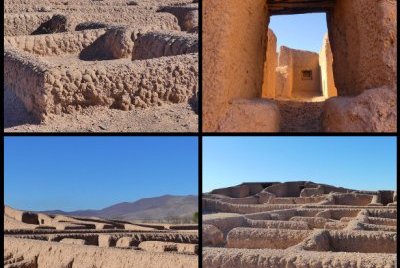
I visited this WHS in spring 2024. I drove to Nuevo Casas Grandes from Hermosillo airport (8 hrs) and apart from a few military checkpoints along the highway where the Trump wall is visible, the only minor issue were the many potholes. If you happen to have a rental car with hub caps, I suggest removing them or buying straps as otherwise you'll most certainly lose them while driving to/from Paquimé. Keep in mind that it can get very cold after sunset and especially in the morning with the formation of morning dew; but after that it quickly gets very hot.
The ancient city of Paquimé is located just 60 miles south of the US border in a fertile valley of the Casas Grandes or San Miguel River in the northern part of the Mexican state of Chihuahua. The archaeological zone of the city covers about 370 acres thus making it the largest that represents the peoples and cultures of the Chihuahua Desert. Paquimé is said to contain the most monumental and complex architecture in all of northern Mexico. It is quite possible that Paquimé has been influenced by Chaco Canyon and the peoples of the Four Corners region, as evidenced in some of the construction methods used at the city, such as T-shaped doors and the facades with porticoes.
In addition to the mud-and-gravel brick 4 storey apartments, in Paquimé one can find great plazas and public spaces, a complex irrigation and sewage system, ball courts built …
Keep reading 0 comments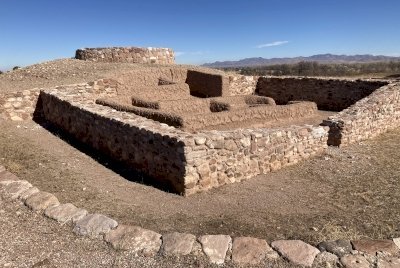
Paquimé, located over 1,700 km north of Mexico City, is a site that is often overlooked. It doesn’t have the great monuments that other pre-Columbian Mexican sites are known for. It’s a niche site for archaeologists, exemplifying architectural and trading links between the area of the Classic Pueblo sites (now located in the Southwest USA) and Mesoamerica. Research has never been intensive, as archaeologists traditionally focus on either one of these worlds. But I was pleasantly surprised by its size and good condition. For me, it closed a circle after having already seen the other Puebloan sites of Mesa Verde, Taos, and Chaco. A visit also brings a lot of insight into the specific history of this region, always so far away from everything.
After walking past the still closed entrance barrier at the opening hour of 10 a.m., I was welcomed in by the guard and his German shepherd dog (I kept a safe distance, much more than 1.5m!) and sent on my way to walk the circuit that is signposted at the site. The first structure one encounters here is the ball court – it looks like a simpler version of the Mayan ones. The presence of a Mesoamerican ballcourt at Paquimé is often given as an example of the fusion of cultures that happened here, but the northern cultures had their own kind of ball courts as well and we do not even know whether they all played the same game.
The settlement consisted of …
Keep reading 0 comments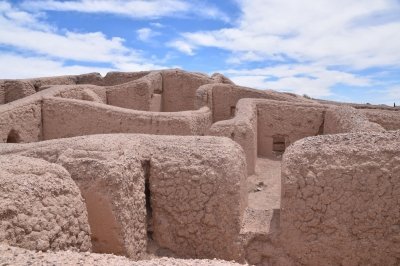
On our US road trip in may 2018, we spent a day going south to visit Paquime. From Tucson we crossed the border at Aqua Prieta and we had no trouble crossing the border. We bought Mexican car insurance from Thrifty, one of the few car rentals that allow driving into Mexico. We had very few expectations to the Mexican road trip but were really surprised. The first 100 km along the US boarder was very scenic, with mostly good roads.
Paquime was very calm. On a Saturday there were a few other Mexican tourists around, but “none” foreign. Paquime is largest pre-columbian site in North America. The visitor center was informative and explained well the city and people living there, and had a small, but nice exhibition of pottery and figurines. The people of Paquime were excellent craftsmen. The city was established in 1100 century by people coming from north. The citys construction was made up of innovative adobe techniques. They built multi-familiar complexes, some of them counting four floors and more than 1700 rooms. That’s why the Spaniards called the place Casas Grandes. It was called Paquime by the natives who lived there for about 300 years. The multi-family complexes and the T-shaped doorways is significant to the city. Later we also found traces of those doorways in Chaco Canyon, but not to the same extend.
There were also open plazas for markets, ceremonial structures, mounds with architectural features in the form of decapitated birds, ball …
Keep reading 0 comments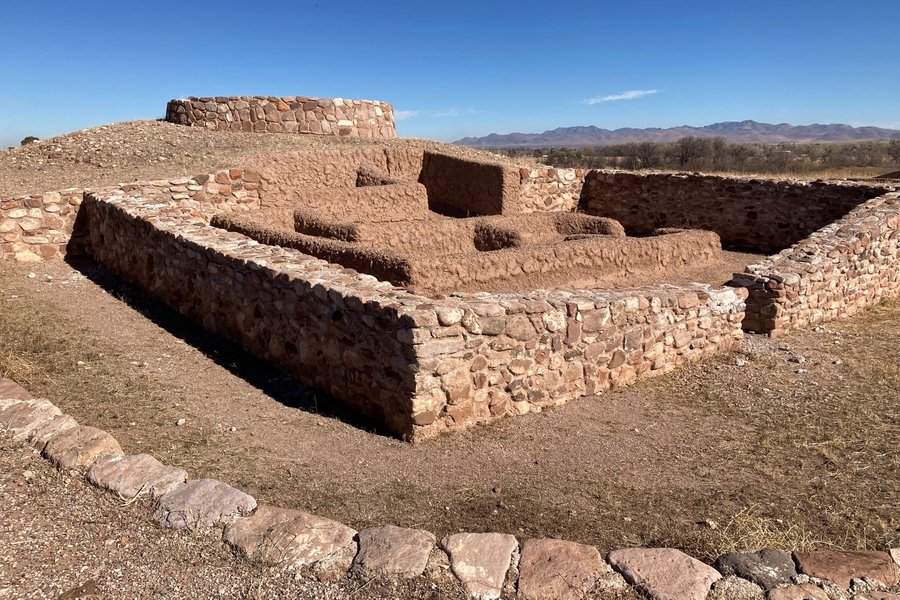
Paquime is a great place to visit, it is not that far from the border with Texas and New Mexico. You can even visit it for a weekend getaway. The museum is excelent, and it is not expensive. While in the area, you can choose from various hotels and good restaurants. For all of you guys who always have to be checking your e-mails, you can visit "El Cybernetico" an internet cafe in Nuevo Casas Grandes.
Keep reading 0 comments
Casas Grandes is a 50 mile drive south of the New Mexico, USA border into Chihuahua, Mexico on a good highway. The adobe or mud city is partially restored and provides a good example of how the pueblo native americans settled down. The adjoining museum is excellent. Nuevo Casas Grandes is just 15km down the road with great restaurants and motels. Also, you don't need to speak Spanish to get there. Like other pueblo indian sites, the dwellings are apartment style buildings with everyone living in close quarters.
Keep reading 0 comments
